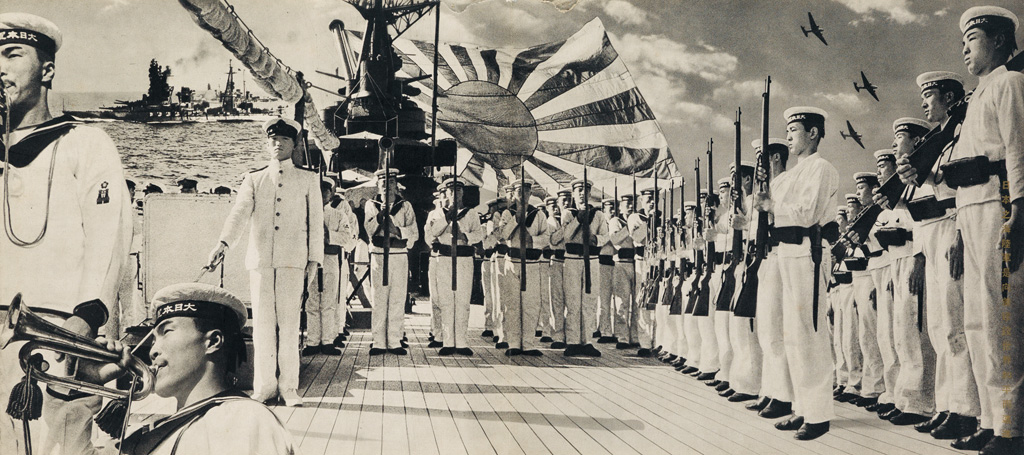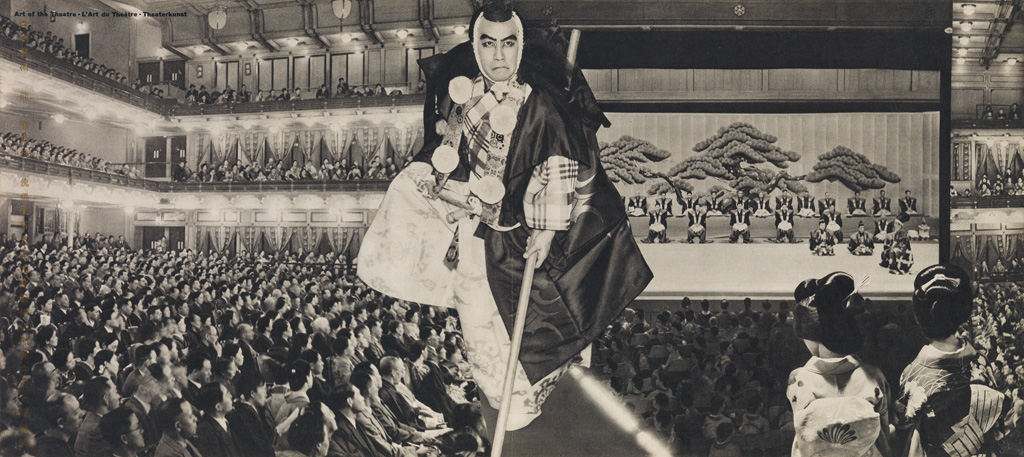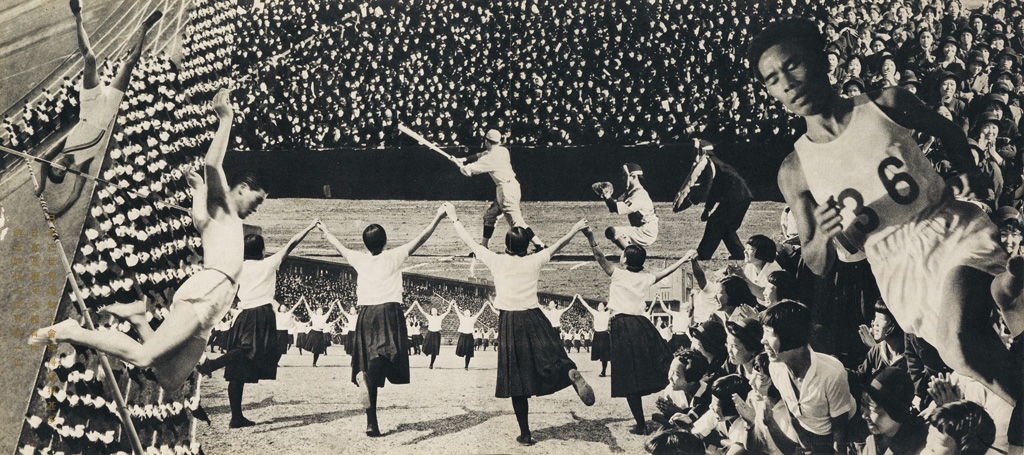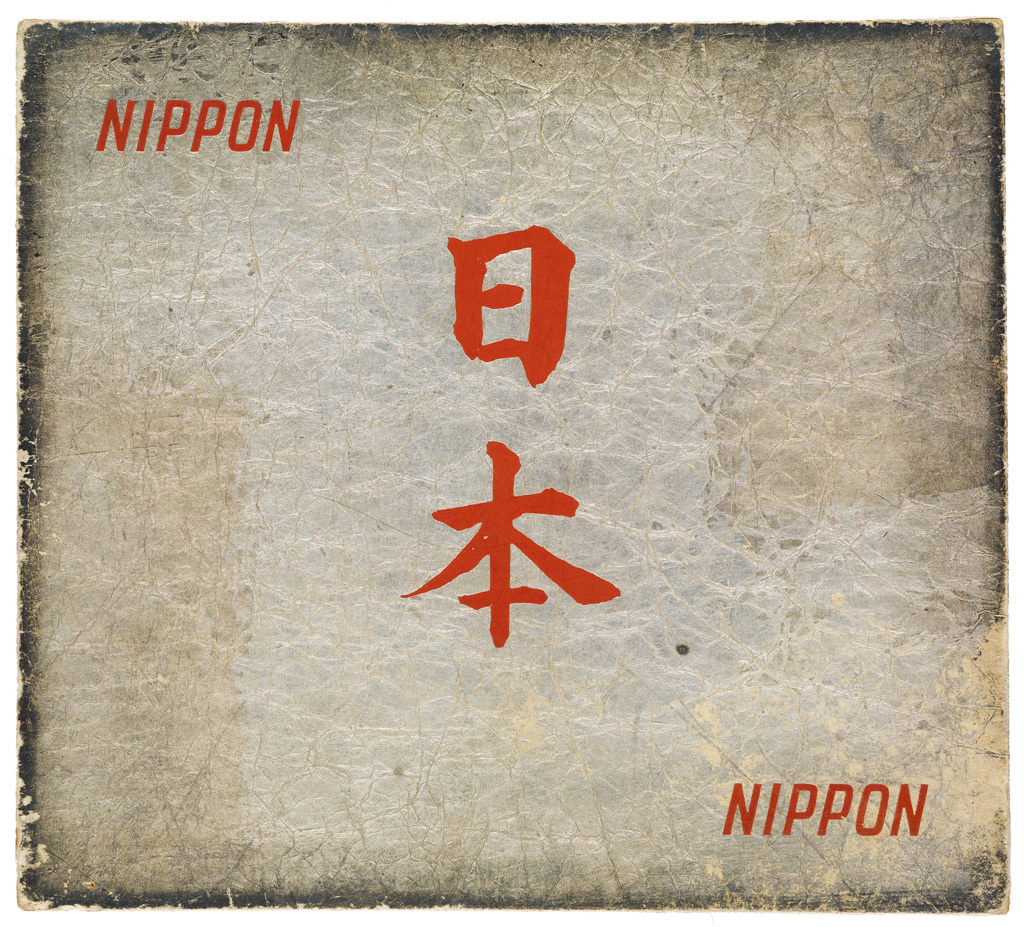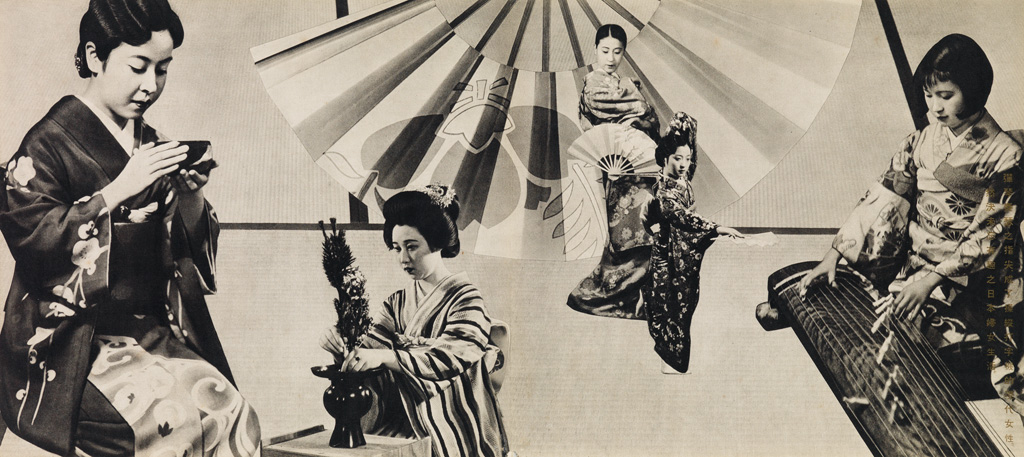Sale 2474 - Lot 313
Unsold
Estimate: $ 12,000 - $ 18,000
(KEN DOMON, MASAO HORINO, IHEI KIMURA, ET ALIA.)
Nippon--Japan.
Edited by Goro Kumada. Illustrated with 32 double-page back-to-back photomontages configured as an accordion fold-out, each full-page spread an incredible homage to culture, industry, military, or the everyday Japanese citizen. Oblong folio, textured silver paper covered boards with red lettering, rubbing at the edges and loss to the rear panel; a couple spreads with isolated chips at the top edge. Parr/Badger I 178. FIRST EDITION.
Tokyo: Kokusai Bunka Shinkokai, 1937
Nippon--Japan.
Edited by Goro Kumada. Illustrated with 32 double-page back-to-back photomontages configured as an accordion fold-out, each full-page spread an incredible homage to culture, industry, military, or the everyday Japanese citizen. Oblong folio, textured silver paper covered boards with red lettering, rubbing at the edges and loss to the rear panel; a couple spreads with isolated chips at the top edge. Parr/Badger I 178. FIRST EDITION.
Tokyo: Kokusai Bunka Shinkokai, 1937
Additional Details
Nippon, a journal published by the increasingly nationalistic and militaristic Japanese state, was influenced both by German pictorial traditions of the era (the New Vision) as well as the well-known Soviet propagandist journal USSR in Construction. The Japanese journal's objective was also largely to ease tensions and appeal to Western nations (the journal was published in various Western languages). The quarterly publication made use of Japan's best photographers and designers, and also published books, of which this is one.
The sublime photomontages in this publication are influenced by both Japanese and Western visual traditions, including a flattened pictorial space much like the floating world woodblock prints of prior centuries and the accordion fold format. Each montage takes as its theme an aspect of Japanese culture or national achievement, and used photographs by Ken Domon and Ihei Kimura (both of whom would also become well-known for their post-war work), among others.
This title represents a growing awareness around the power of images to influence and communicate, and represents a high point in the propaganda photo book and Japanese publishing.
The sublime photomontages in this publication are influenced by both Japanese and Western visual traditions, including a flattened pictorial space much like the floating world woodblock prints of prior centuries and the accordion fold format. Each montage takes as its theme an aspect of Japanese culture or national achievement, and used photographs by Ken Domon and Ihei Kimura (both of whom would also become well-known for their post-war work), among others.
This title represents a growing awareness around the power of images to influence and communicate, and represents a high point in the propaganda photo book and Japanese publishing.
Exhibition Hours
Exhibition Hours
Aliquam vulputate ornare congue. Vestibulum maximus, libero in placerat faucibus, risus nisl molestie massa, ut maximus metus lectus vel lorem.



